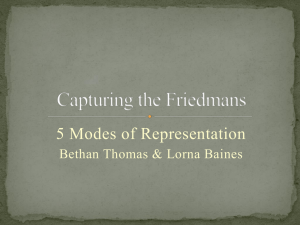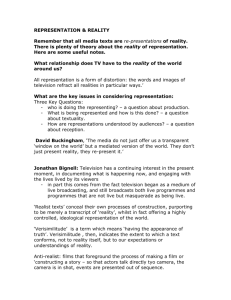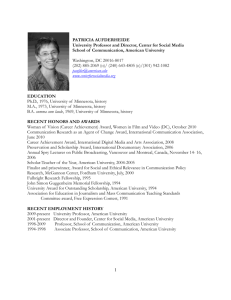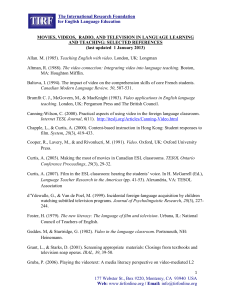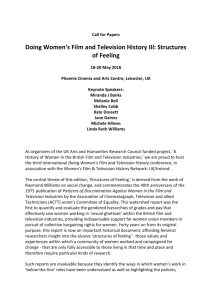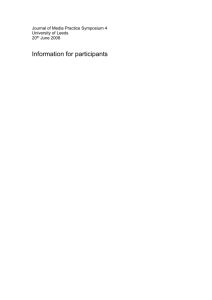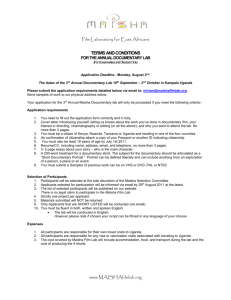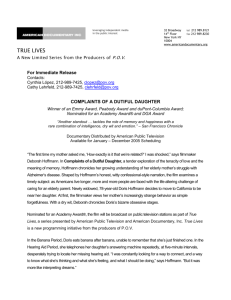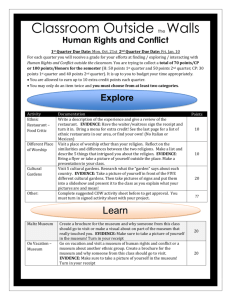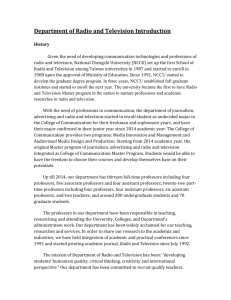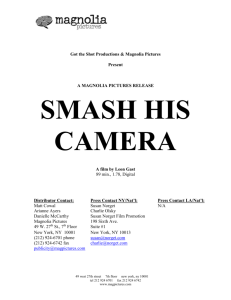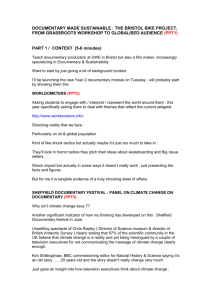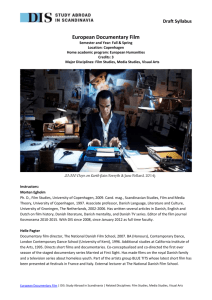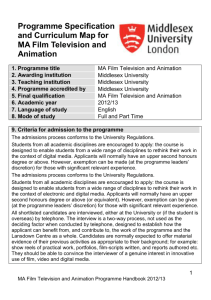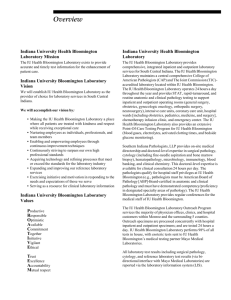Where did you attend college and graduate
advertisement
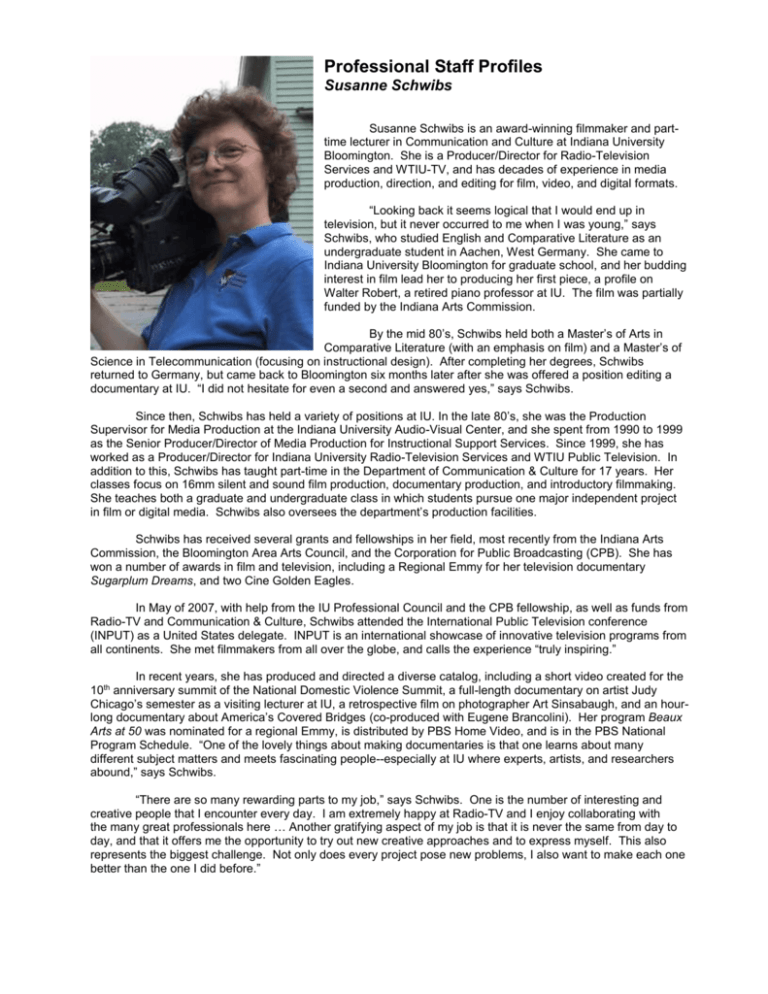
Professional Staff Profiles Susanne Schwibs Susanne Schwibs is an award-winning filmmaker and parttime lecturer in Communication and Culture at Indiana University Bloomington. She is a Producer/Director for Radio-Television Services and WTIU-TV, and has decades of experience in media production, direction, and editing for film, video, and digital formats. “Looking back it seems logical that I would end up in television, but it never occurred to me when I was young,” says Schwibs, who studied English and Comparative Literature as an undergraduate student in Aachen, West Germany. She came to Indiana University Bloomington for graduate school, and her budding interest in film lead her to producing her first piece, a profile on Walter Robert, a retired piano professor at IU. The film was partially funded by the Indiana Arts Commission. By the mid 80’s, Schwibs held both a Master’s of Arts in Comparative Literature (with an emphasis on film) and a Master’s of Science in Telecommunication (focusing on instructional design). After completing her degrees, Schwibs returned to Germany, but came back to Bloomington six months later after she was offered a position editing a documentary at IU. “I did not hesitate for even a second and answered yes,” says Schwibs. Since then, Schwibs has held a variety of positions at IU. In the late 80’s, she was the Production Supervisor for Media Production at the Indiana University Audio-Visual Center, and she spent from 1990 to 1999 as the Senior Producer/Director of Media Production for Instructional Support Services. Since 1999, she has worked as a Producer/Director for Indiana University Radio-Television Services and WTIU Public Television. In addition to this, Schwibs has taught part-time in the Department of Communication & Culture for 17 years. Her classes focus on 16mm silent and sound film production, documentary production, and introductory filmmaking. She teaches both a graduate and undergraduate class in which students pursue one major independent project in film or digital media. Schwibs also oversees the department’s production facilities. Schwibs has received several grants and fellowships in her field, most recently from the Indiana Arts Commission, the Bloomington Area Arts Council, and the Corporation for Public Broadcasting (CPB). She has won a number of awards in film and television, including a Regional Emmy for her television documentary Sugarplum Dreams, and two Cine Golden Eagles. In May of 2007, with help from the IU Professional Council and the CPB fellowship, as well as funds from Radio-TV and Communication & Culture, Schwibs attended the International Public Television conference (INPUT) as a United States delegate. INPUT is an international showcase of innovative television programs from all continents. She met filmmakers from all over the globe, and calls the experience “truly inspiring.” In recent years, she has produced and directed a diverse catalog, including a short video created for the 10th anniversary summit of the National Domestic Violence Summit, a full-length documentary on artist Judy Chicago’s semester as a visiting lecturer at IU, a retrospective film on photographer Art Sinsabaugh, and an hourlong documentary about America’s Covered Bridges (co-produced with Eugene Brancolini). Her program Beaux Arts at 50 was nominated for a regional Emmy, is distributed by PBS Home Video, and is in the PBS National Program Schedule. “One of the lovely things about making documentaries is that one learns about many different subject matters and meets fascinating people--especially at IU where experts, artists, and researchers abound,” says Schwibs. “There are so many rewarding parts to my job,” says Schwibs. One is the number of interesting and creative people that I encounter every day. I am extremely happy at Radio-TV and I enjoy collaborating with the many great professionals here … Another gratifying aspect of my job is that it is never the same from day to day, and that it offers me the opportunity to try out new creative approaches and to express myself. This also represents the biggest challenge. Not only does every project pose new problems, I also want to make each one better than the one I did before.”



